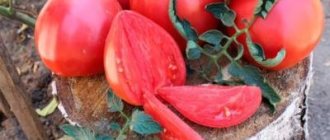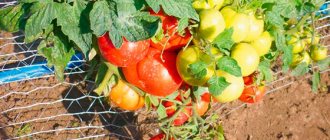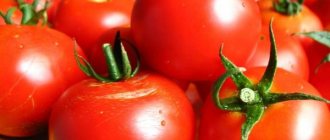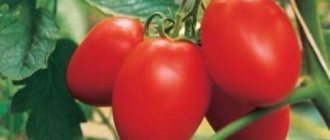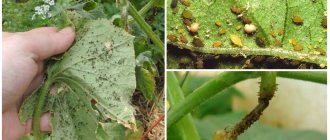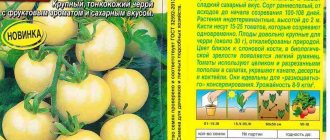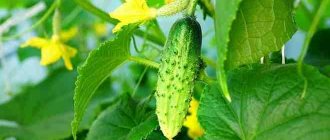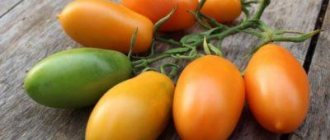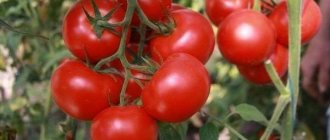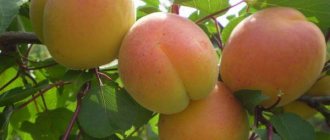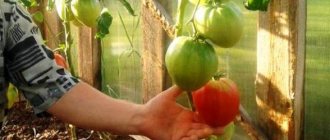Many avid gardeners are interested in the Khorovod tomato, reviews, photos and recommendations for growing. Domestic breeders offer two varieties of tomatoes for growing in beds or in small film greenhouses: Khorovod and Spring Khorovod. Despite the similar name, they differ significantly. When experimenting with new varieties of tomatoes, everyone wants the result of their work to be successful. Therefore, before purchasing seeds or seedlings, it will not be superfluous to have information about the characteristics of care, taste and the possibility of using tomatoes of each variety.
Description of the variety
Breeders offer “Round Dance” and “Spring Round Dance” for cultivation. Despite the similar name, these varieties have many differences.
"Khorovod" is an indeterminate variety that has no restrictions on the growth of stepsons. In appearance, these tomatoes are very reminiscent of Cherry tomatoes.
Tomato bushes have long branches. When grown in greenhouse conditions, their growth can reach 2 meters.
The foliage is average. At the same time, the leaves themselves are quite small.
Flower brushes are complex. On average, each of them produces about 20 tomatoes weighing 10-15 g.
The fruits have round shapes. Their skin is smooth and shiny.
The formation of the first cluster with fruits occurs above the eighth leaf, then clusters are formed through the leaf.
Early maturation is a characteristic feature of the Round Dance. It takes about 100 days from the appearance of the first shoots to full ripening.
Description and characteristics of the variety
Tomato Khorovod is a tall indeterminate plant. Powerful trunks grow up to 2 m. They require pinching of the tops and shaping. What are the characteristics of bushes:
- moderate foliage;
- semi-spreading;
- 15-25 cherry tomatoes are tied on the brushes;
- The first bunch is formed after 8-9 leaves.
The yield of the harvest occurs amicably. Neat brushes ripen 105 -110 days from the start of germination. The variety is early ripening.
Characteristic tomato characteristics:
- average weight 15-20 g;
- round form;
- glossy bright red color;
- seed chambers 2;
- the pulp is juicy, tender;
- sweet notes predominate in the taste;
- sugar level 5-6%.
Elegant tomatoes are used for salads, slices, and as decorations for cocktails. They make delicious canned preparations.
Features of cultivation
It is recommended to grow “Round Dance” through seedlings. For cultivation, it is necessary to prepare boxes with drainage holes, as well as a nutritious soil mixture. It is sold in any specialty store, but you can make it yourself. To do this, garden soil, humus and river sand are mixed in equal proportions (3:1:1). To get an even better effect, a little wood ash is added to this mixture.
Before you start sowing seeds, the soil must be disinfected with a solution of potassium permanganate from a spray bottle.
According to experienced farmers, it is necessary to sow seed material to a depth of 1-1.5 cm. This will allow the seeds to get rid of the husk in a timely manner.
When transplanting seedlings to a permanent place, it is very important to act carefully. It is best to transplant with a small lump of earth. The most important thing is not to damage the root system.
Diving is carried out after several leaves have formed on the plant.
How to grow the variety
Cherries have peculiarities of agricultural technology. Breeders advise paying attention to them:
- Tomato variety Khorovod should be sown on March 15-20;
- Cover the tray with film and place in a warm place (25 degrees);
- after germination, place on a bright, cool windowsill;
- illuminate with an agricultural lamp for up to 16-18 hours;
- in the phase of two leaves, pick up, deepen to the cotyledons;
- apply fertilizer recommended by seed manufacturers;
- harden plants;
- Do not water before planting in a permanent place (withered tomatoes break less often);
- place on beds filled with mineral complexes;
- form strictly into one stem;
- remove stepsons;
- lighten filling brushes;
- watering should be regular;
- Garters are required;
- it is advisable to mulch the soil (this will preserve moisture and breathability);
- The variety does not tolerate stagnation of damp air: ventilation is required.
See also
Description of the Sasher tomato variety, its characteristics and cultivationRead
Tomato is rarely affected by pests. The only threat is garden snails. They like sweet fruits with a rough skin.
The round dance is included in the State Register of the Russian Federation. It is recommended to grow in country gardens and private plots.
Variety care
Proper care of this variety means removing all shoots. You should have one stem left. Only this method can achieve the highest yield.
You may be interested in: Dates for planting tomato seedlings in open ground and greenhouses according to the garden calendar Favorable days for planting tomatoes for seedlings in 2021 according to the lunar sowing calendar Favorable days for picking tomatoes in 2021 after germination: timing of picking tomato seedlings in the table by day
Spreading tomato branches need to be tied up. If tomatoes are grown under film, no more than 8 bunches of fruit are left on the stem, after which the top is pinched (to stop the growth of the plant).
Like any other plant, Khorovod tomato bushes must be regularly watered and fed with mineral fertilizers. It is also necessary to take preventive measures in order to protect the crop from damage by diseases or any pests.
It is necessary to water tomatoes regularly, but not often. 1-2 times a week is enough.
It is necessary to nourish the soil with mineral fertilizers 1-2 times a month. At the beginning of plant development, they need more nitrogen fertilizers, then potassium and phosphorus.
Tomato Round Dance
Description and characteristics of the Khorovod tomato variety, reviews, photos
Early maturing, tall, indeterminate cherry tomato for greenhouses and open ground.
The bush is more than 2 meters high and requires tying to a support and pinching. The best results were obtained when forming a plant with 1 or 2 stems. In the first case, it is necessary to remove all the stepsons (lateral shoots from the axils of the leaves), in the second option, 1 stepson must be left (the one that grows under the first flower brush).
The leaves of this tomato are small and green. The inflorescence is complex.
Basic qualities of fruits
photo author Oksana Poltavskaya
The fruits are round, smooth, shiny, red in color at maturity, weighing 5-10 grams, very tasty and sweet! Ideal for fresh consumption, in salads (children really like them). This type of tomato is also suitable for whole-fruit canning - small tomatoes look beautiful in small jars.
Advantages of the variety: early fruit formation, which allows you to collect a full harvest before late blight appears.
This tomato variety is included in the State Register of Breeding Achievements in the Russian Federation for cultivation in open ground and under film covers on private farms.
Features of growing tomatoes Round dance, planting and care
We recommend sowing the seeds of this tomato for seedlings 60-65 days before the intended planting in the ground. Dive - at the stage of two true leaves. When planting seedlings in a permanent place per 1 sq. It is recommended to place no more than 4 plants per meter of prepared area.
Further care for tomatoes consists of timely watering, weed removal, pinching, fertilizing with complex mineral fertilizer and preventive measures to protect the crop from diseases and pests.
Formation of tall tomatoes, video
If you grew Khorovod tomatoes, please write whether you liked them or not. What was the yield and taste of the fruits like under your climatic conditions? How do you rate the disease resistance of this tomato? Briefly describe the advantages and disadvantages of this tomato in your opinion. If possible, attach a photo of the entire bush or individual fruits you grew to your comment. Thank you!
Your reviews of the Khorovod tomato and additions to the description will help many gardeners evaluate this variety objectively and decide whether it is worth planting or not.
Resistance to diseases and adverse conditions
Like any other plants, “Khorovod” is susceptible to diseases. However, taking preventive measures will help avoid this. These measures include the following procedures:
- mulching;
In addition to increasing disease resistance, mulching will help reduce the amount of watering and weeding of plants. It is best to use sawdust or pine needles as the material.
- ventilation of the greenhouse;
It is very important to ventilate tomato bushes if they are grown in greenhouse conditions. This must be done 1-2 times daily. Otherwise, the plants will wither and this will affect their further development.
- weeding.
Don't forget to weed out the weeds in your garden beds. The number of weedings is equal to the number of waterings (1-2 times a week).
Growing tomatoes
Tomatoes (tomatoes) are a perennial herbaceous plant of the nightshade family, growing on all continents. A vegetable crop (annual) - the common tomato - is grown even in the Far North in protected soil.
Tomato fruits contain sugar, citric and malic acids, vitamins C, B, PP, K, potassium salts, iron, magnesium, cobalt, zinc. Tomatoes have a juice effect, improve digestion, reduce blood pressure and cholesterol levels in the blood, and have a mild laxative and antimicrobial action. It is not true that tomatoes contribute to the development of gout. Tomatoes are heat-loving, self-pollinating plants; with a well-developed root system that easily forms additional roots in loosened soil; relatively drought-resistant, cannot withstand excess moisture in the soil; with a long growing season (120-130 days), therefore in the Moscow region only seedlings of early and mid-ripening varieties are used for planting; responsive to fertilizers.
Tomatoes grow very well in sandy loam soils with an acidity pH of 6-6.5. The areas should warm up well. The best predecessors are cucumbers, cabbage and other crops (except tomatoes), for which organic fertilizers were applied. Before planting, hardening off the seedlings is practiced.
High-quality hardened seedlings should have a fibrous, well-developed root system, a thick stem with short internodes and dark green leaves. For hardening, a certain temperature is of great importance. During the daytime, the optimal temperature for tomato seedlings is 16-20°C, at night – 10-12°C. In the last 7-10 days before planting, the seedlings are watered moderately, since excess moisture with poor ventilation of the room contributes to the plants becoming weaker and more friable. tissue structure.
At this time, phosphorus-potassium fertilizers should predominate in fertilizing. At the last stages of hardening, for preventive purposes, it is recommended to spray the seedlings with 0.5 percent Bordeaux mixture (50 ml/l of water). The seedlings are planted in open ground when the night frosts stop, in cloudy weather or in the evening in rows with a row spacing of 60 cm and distances in the row of 40 cm. The optimal temperature for seed germination, growth and development of plants is 20-25 ° C. At temperatures below 15 ° C, flowering and fruit set stops; below 10 ° C - growth stops, at 1-3°C - plants are damaged or die. However, very high temperatures (more than 35 ° C) prevent pollination of flowers. In the spring, tomato beds of open ground begin to be prepared ten days before planting. In areas with loamy and clay soils, half a bucket of peat, humus, and sawdust is added per 1 m2 of area (previously scalded with boiling water), as well as mineral fertilizers (a tablespoon of potassium sulfate and ammonium nitrate, 4 tablespoons of double superphosphate and a liter jar of wood ash). On peat soils, but 1 m3 of area, add a bucket of rotted manure, 1/3 bucket of sand and sawdust mineral fertilizers (3 tablespoons of double superphosphate, potassium sulfate, a liter jar of wood ash and a teaspoon of copper sulfate). In areas with sandy soil, per 1 m2 of area add a bucket of peat and sawdust, 3 tablespoons of potassium sulfate superphosphate, 2 tablespoons of nitrophoska and a half-liter jar of wood ash. Carefully dig everything up to a depth of 30 cm and make beds 30 cm high and 100 cm wide, which are watered abundantly with warm water. Tomato seedlings aged 50-60 days are planted as soon as the frosts have passed .
The planting pattern is row, for tall varieties the row spacing is 70 cm, in the row between plants is 50 cm, for low-growing varieties is 70×30 cm, 4 plants per 1 square meter. Seedlings are planted vertically in holes and cotyledon leaves.
However, if the seedlings have outgrown and stretched out, they are planted obliquely in furrows 12-15 cm deep with the tops facing south, sprinkling part of the stem with 2-3 leaves with moist soil. When the plants take root, they place supports in the form of stakes, driving them into the ground from the north side of the stem at a distance of 10 cm. Seedlings planted in moist soil are not watered, but sprinkled with a layer of peat or sawdust.
Reviews from gardeners
Despite the fact that the “Khorovod” tomato variety appeared quite recently, it does not have numerous reviews from gardeners who prefer tomatoes with high yields, but at the same time low weight.
Oleg
My experience in gardening is quite extensive. However, every year I buy the same seeds for growing. In the past, I accidentally purchased Round Dance seeds instead of Cherry seeds. Initially I wanted to exchange them for the ones I needed, but then I decided to try to grow them.
I was very pleased with the result. The harvest was not long in coming. After only 97 days I was collecting delicious fruits, which were used to make salads.
Elena
Initially, we grew Khorovod tomatoes on the balcony of the house, but due to its high growth, it had to be transplanted into a greenhouse. It is worth noting that we carried out a dive, apparently this is the variety.
When the fruits are ripe, the bush looks like it is strewn with grapes, only red. The tomatoes are quite small, but the plant is completely covered with them. The taste of “Khorovod” is excellent. Some people don't like the thick skin of the fruit. I consider this a plus, since thanks to it the fruits do not burst.
Catherine
Everyone knows how difficult it is to instill in young children a love of healthy vegetables, but I still decided to try. To accomplish my plan, I purchased “Round Dance” seeds on the Internet. The cultivation produced excellent tomatoes. The harvest is incredibly tasty. Tomato bushes are literally strewn with small tomatoes. Externally, the fruits are very similar to small red buttons. The tomatoes are round and even. Their taste is pleasant: sweet with a slight sourness.
She suggested trying “Round Dance” for her children. They immediately realized that these were not berries, but they did not refuse tomatoes.
Description of the Grotto tomato variety, its characteristics and care
The Grotto tomato variety was developed by Russian breeders in 1994.
It is characterized by its compact size, the height of the bush does not exceed 40 cm. Thanks to this, it can easily be grown on the balcony, which allows it to be planted by city residents who do not have their own summer cottage. The volume of the plant is also small, the branches and leaves are oversized. The Grotto tomato is intended for growing in open ground, however, nothing prevents it from being planted in greenhouses and greenhouses. Those who planted this variety say that there it will bear fruit even earlier, and the fruiting period will last until September-October, depending on the region. The variety is considered early ripening; harvesting can begin after 110–120 days, counting from sowing the seeds.
No special care is required; due to the low height of the bushes, they do not need staking.
The flowers are simple, small, the stalk has an articulation. The first inflorescence is formed over the 6-7 leaves, then the rest follow in a chaotic order.
The description of the fruit is as follows: tomatoes have a round or oval shape, a smooth surface, and a bright red color. An unripe tomato is green in color; darkening can be detected at the stalk. Their weight is approximately 50 grams, the yield per meter of area is from 3.5 to 5 kg. The taste of tomatoes is sweet and sour, the taste is good. The variety is universal, suitable for pickling, fresh consumption, making salads or juice. The fruits tend to ripen after picking. But they also ripen quietly on the bush.
This variety is susceptible to the following diseases:
- late blight;
- septoria;
- macrosporism;
- black bacterial spot;
- slight formation of rot.
This characteristic inspires confidence and a desire to try growing this tomato variety in your garden.
Gardeners grew this tomato both in open ground and in greenhouses. A characteristic feature of the Grotto is considered to be limited growth. After the first fruits appear, the stem stops growing, and all the plant’s energy is directed to feeding the fruits. The variety forms 5–7 fruiting branches.
To ensure that the harvest does not disappoint, it is necessary to properly care for the plant. Care includes the following activities:
- Pruning - it is necessary to rid the bush of excess shoots, they do not produce fruit, but take away nutrients. Overloading the plant with useless branches will slow down the growth of tomatoes.
- Garter - despite its small growth, the plant still needs a procedure; tying the stem ensures its stability, so that the fruits will be suspended without touching the ground.
Due to the rapid ripening of the Grotto tomato variety, it is suitable even for cultivation in the northern regions.
Low-growing varieties do not plant immediately in the ground; it is necessary to sow seedlings, otherwise the growth of the plant will slow down, and the harvest can only be harvested at the end of summer. It is recommended to sow in March, it is at this time that the bush begins to grow intensively, since the sun illuminates them longer. The formation of the first clusters can be seen in late April - early May.
Before planting, tomatoes need to be hardened off so that they can quickly adapt to their new location. Already with the appearance of the first shoots, the temperature should be reduced to 16–18 degrees. The room must be ventilated, and from the end of May you can take them outside for the whole day.
In addition, seedlings need to be fed with special products, which can be found in specialized stores. Soil moisture should be moderate; too much water will rot the plant's roots.
The soil must be loosened periodically, and if the stem has become very elongated, it can be hilled to make it more stable.
Description of an early variety of tomatoes Khorovod and growing seedlings
Gardeners have long liked the fruitful and early-ripening Khorovod tomato: the characteristics and description of the variety allow it to be classified as cherry tomatoes. But there are also small differences, because many small-fruited varieties crumble when slightly overripe. In Khorovod, the fruits are held more firmly on the stalks. But they love tomatoes not only for this valuable quality.
General characteristics of the plant
The Khorovod tomato variety is classified as an indeterminate crop. The bush has unlimited growth of the main stem: in greenhouse conditions its height reaches 2 m or more. Tall stems need to be tied to a support and formed into 1-2 trunks.
The Khorovod variety is suitable for cultivation in open ground, under temporary shelters or in a greenhouse. In any conditions, the plant produces abundant harvests; it is resistant to both slight drying out and cold, prolonged rains. Reviews from gardeners only note the appearance of excessive acidity in the taste of the fruit if the tomato is grown in open ground during rainy seasons.
But on well-warmed soil and in bright sun, the sugar content of tomatoes increases significantly.
The variety is resistant to most fungal diseases. During dense plantings or in cold summers with heavy rainfall, it is recommended to remove some of the foliage in the lower tier of bushes. This protects tomatoes from early blight, allowing the entire harvest to be preserved.
Description of tomato fruits Khorovod
The productivity of cherry tomatoes is quite high. Despite the small size and weight of the fruit (up to 15 g), the bush forms up to 10 clusters. During the summer, about 3 kg of calibrated tomatoes can be harvested from each plant. When planting 3-4 bushes per 1 m², the average yield reaches 10-12 kg per unit area.
The skin of mini tomatoes is very durable. It does not crack during the period of filling and ripening tomatoes, and is resistant to thermal influences. When eating the fruit fresh, it may seem rough.
The pulp of the fruit is fleshy and juicy. Each tomato produces 2 seed chambers with a few seeds. In greenhouse conditions, some fruits may not have seeds at all, which must be taken into account when producing your own seed.
The characteristics of the Round Dance tomato in terms of taste vary among different gardeners and depend on how the vegetable is grown.
In a greenhouse or during hot, dry summers, tomatoes produce sweet, richly flavored fruits similar to the Italian varieties for tomato sauces.
But with a lack of sun or excessive watering of the plants, the taste acquires a noticeable sourness and approaches the classic sweet and sour.
Russian gardeners pay great attention to the suitability of tomatoes for canning. Khorovod tomatoes are very good for making assorted dishes: in combination with gherkins, canned food looks impressive.
If the harvest is abundant, you can process cherry tomatoes into juice and tomato puree for sauces and lecho. The high solids content will allow you to obtain a high-quality product with a rich taste.
Small tomatoes are convenient to dry and dry.
Growing variety seedlings
It is recommended to sow early-ripening tomato seedlings 2 months before planting in a permanent place. The soil for sowing is made up of equal parts of garden soil, sand and humus. If the soil on the site is heavy and saline, you need to add a little chalk (1-2 tablespoons per 5 kg of mixture). Instead of chalk, you can take fluff, ground eggshells, dolomite or marble flour and others
Before sowing, the prepared substrate should be generously soaked directly in the box with a hot solution of potassium permanganate (dark pink). Sowing is done after the soil has cooled. Seeds need to be planted to a depth of no more than 0.5 cm, otherwise the seedlings will not appear for a long time and will be weak. Cover the boxes with glass and place in a warm place. At a temperature of +25 °C, tomatoes sprout within 4-5 days.
Seedlings are planted in separate pots or boxes at a distance of 10 cm from each other. If there is a lack of natural light, small plants will have to be additionally illuminated with phytolamps. Caring for seedlings consists of regular watering. Plants are planted in groups of 3-4. per 1 m².
Tomato Ildi: characteristics and description of the variety with photos
Fans of small-fruited tomato varieties will certainly appreciate the Ildi tomato. After all, it is a decoration for any area and holiday table, including.
What is the species
The characteristics of the plant will help you understand what is necessary for the proper growth of tomatoes on the site, their fruiting and the prevention of diseases.
https://youtube.com/watch?v=VOkQChzGJkc
Plant:
- Bush: indeterminate.
- Height: 1.8-1.9 m.
- Brushes: fan, complex. The first is laid over the 9th sheet.
- Number of tomatoes in a brush: 50-70 pcs.
- Ripening time: 85-100 days.
Fruit:
- Shape: round.
- Yellow color.
- Weight: from 10 to 15 g.
- Density: high.
- Peel: not tough.
- Taste: sweet.
- Transportability: excellent.
- Shelf life: long time.
Planting and care
By growing an “Ildi” tomato on your plot, you can surprise all your friends and acquaintances. A plant with tassels that live their own lives. On a separate cluster, fruits can grow and turn yellow, bloom, and produce a new crop at the same time.
The seeds are small, so they take a long time to enter, up to 14 days.
They are grown in open ground and in greenhouses. It is best to place 3 plants per 1m2. Form into 2-3 stems. After the formation of 4-5 brushes, the growth point is removed. This is necessary so that the plant gives more strength to the existing fruits.
Stepping is mandatory, especially the first time after planting in the ground.
Susceptibility to diseases. Harvest volume and application
Resistant to many diseases. Including late blight. There is no need for special treatment of seeds and adult tomato plants.
The productivity is high; with proper formation of the plant, you can get a rich harvest of tomatoes of the same size. Approximately 3 kg per plant.
Positive and negative aspects of the species
"Ildi", a tomato that has more positive characteristics. Therefore, it is appreciated by lovers of Cherry tomatoes.
Pros:
- Hardy.
- Resistant to diseases. In particular late blight.
- High yield.
- The versatility of fruit use.
- Long shelf life.
- The fruits do not crack.
- Favorite treat for children.
Minuses:
- Mandatory bush formation.
- Each brush needs to be tied individually, and there can be up to 10 pieces.
The opinion of summer residents regarding Ildi tomatoes
Useful information about the characteristics of the variety is available on the Internet. By studying reviews, you can obtain information about the subtleties and agrotechnical techniques, taking into account which will help you grow a healthy bush and reap a large harvest.
Marina. Delighted with the plant. Fruiting is long, until October. The taste is sweet.
Zoya. The description coincided with reality. They sing before everyone else.
Alexandra. I liked the high yield volumes and taste. Survived the frosts in June. It has become the undoubted leader on the list of mandatory landings.
Hope. Delighted with tomatoes, a tall plant laden with fruits. The taste is amazing, the skin is not rough, but not thin either. There are more advantages regarding similar tomato varieties. Wins in terms of taste and harvest volume.
Meleja. This is the second year he has been growing tomatoes of the “Ildi” variety. He says that for a family of 4 people, 2 plants are enough. If not canned. The first year I tried to stop the growth of the brush, cutting off the excess, thereby reducing the volume of the harvest. Formed the plant into one trunk.
Small-fruited tomatoes of the “Ildi” variety are gaining more and more recognition among summer residents. For its taste and ability to decorate any area.
Fruits and yield of tomato
The variety is famous for its high yield. In home greenhouses, you can easily get up to 6.5 kg of tomatoes per 1 sq.m.
- The fruits are spherical, small.
- The weight of one tomato is up to 15 grams, but at the same time 15-20 fruits are formed on one brush at once, and up to 8 brushes on the plant, which is quite impressive.
- The tomato has a sweetish taste and the flesh is juicy.
- The main purpose of the variety is that it is perfect for use in salads and for canning.
Advantages and disadvantages of the variety
Tomato Khorovod has a wide range of advantages:
- High yield.
- Excellent taste with a pleasant sweet note. The tomato is suitable for both fresh and canned consumption.
- The fruits ripen at the same time, this allows you to collect a full harvest before late blight and other diseases appear.
- Decorative.
- Suitability for whole-fruit canning.
- It is resistant to a number of diseases.
There are no particular disadvantages as such, but there are certain disadvantages that should be taken into account:
- Like other cherry tomatoes, they are quite demanding of sunlight.
- They are tall, so growing them at home is somewhat difficult.
- This variety requires regular pinching and tying.
Agricultural technology of the Spring Round Dance variety
When growing tomatoes, it is necessary to correctly select and prepare the site, prepare a mixture for seedlings, process the seeds, plant and grow the seedlings, planting them in the ground in a timely manner. This agricultural technology is determined by the fact that in the cold climate of Russia it can be grown exclusively by seedlings.
Site selection and preparation
The basic principle of agricultural technology is the observance of crop rotation - a certain sequence of growing crops in one area. Crop rotation, on the one hand, allows you to preserve the beneficial properties of the soil, and on the other hand, allows you to effectively prevent diseases. According to the rules of crop rotation, tomatoes grow well after grains, legumes, root vegetables, cucumbers, and cabbage. Tomatoes should not be grown after peppers, eggplants, or potatoes.
In August, green manure, carrots or beets are planted on the site, which are plowed together with soil in October. The resulting biofertilizer will be processed by bacteria and worms during the fall-winter, which will enrich the soil with nutrients.
You can also add humus or compost to the soil, which is also plowed and is absorbed by the soil over the winter. Along with humus, superphosphates (from 15 to 25 g per sq. m), ammonium nitrate (up to 40 g per 1 sq. m), and potassium nitrate (up to 40 g per 1 sq. m) are added.
Important! In any case, it is advisable to add potassium nitrate, since potassium plays an important role in the formation and ripening of fruits.
Soil for seedlings
For seedlings, it is necessary to prepare a nutritious, loose and light mixture. The mixture is based on peat, turf soil, river silt and ordinary soil. Add 2 cups of wood ash, which contains about 30 nutrients, to a bucket of this mixture. A mandatory measure is disinfection of the prepared mixture. There are physical and chemical methods for such treatment.
Physical methods include:
- freezing the soil, for which it is packaged in bags and left for a month and a half in the frosty air:
- steaming: the soil is placed in small bags and placed in a steam bath for up to 30-40 minutes;
- calcination: the soil is distributed on a baking sheet or in foil, and then left in the oven for 40 minutes, setting the processing temperature to no more than 90-100 ºС.
The chemical method involves treating the soil with chemicals. The simplest method is impregnation with a weak solution of potassium permanganate (potassium permanganate content in the solution is 2%). However, not all gardeners consider this method effective, so they prefer to treat the soil with a solution of fungicides Quadris, Ridomil, Maxim and others. The dilution rates for solutions are strictly according to the instructions.
Seed preparation
To begin with, the seeds undergo a calibration procedure: warm water is poured into a liter jar and a tablespoon of kitchen salt is dissolved in it. Tomato seeds are poured into the solution and left for up to 8-10 minutes. During this time, the good seeds will sink down, and the bad ones will remain on top, since they are empty, which means they cannot drown. They should be selected from the surface and the remaining grains should be strained.
Disinfection is also required for seeds. It is recommended to treat them with a solution of the drug Agat, which not only has a fungicidal effect, but has a stimulating effect, accelerates seed germination and improves the immunity of future plants.
This drug is based on killed bacteria and their metabolic products. The solution is prepared at the rate of 7 g per 1 liter. The seeds are soaked in this solution for 3 hours, after which they are dried.
Sowing seedlings
Seeds of the Spring Round Dance variety are planted in the ground 60 days before planting for seedlings. That is, if you plant seedlings in early June, then the seeds are sown somewhere in late March or early April.
Soil is placed in containers washed with soapy water and disinfected with a solution of potassium permanganate. Before sowing, it is necessary to spill it with warm water. Seeds are sown to a depth of no more than 1-2 cm, sprinkled with soil and covered with film to create the optimal temperature for germination.
Seedling care
Like most tomato varieties, seedlings of the Spring Round Dance variety peak at the stage of 2 true leaves. To do this, they are planted in separate pots, slightly buried in the soil. The soil under the seedlings should not be allowed to dry out, so it should be moistened as necessary. In the period between waterings, be sure to loosen. On day 60, the seedlings are ready for planting in the ground.
Important! If you delay the timing of planting seedlings, then it will be problematic to plant them, and even if you succeed, the bushes will hurt and may break.
Planting in the ground and caring for bushes
It is recommended to plant Spring variety tomato seedlings in early June, when the ground and air have sufficiently warmed up to a consistently warm temperature. Naturally, they can be planted in a greenhouse earlier.
The planting pattern for bushes is 40x40 cm, i.e., on average per 1 square. m will have 5-6 plants. The depth of the holes is 10-12 cm. They should be fertilized with a glass of humus or ash. Instead, you can add 5 g of superphosphate or potassium nitrate. You should be more moderate with nitrogen fertilizers, as they can provoke increased formation of foliage to the detriment of the formation of ovaries. The holes are watered with warm water, seedlings are buried in them and sprinkled with earth.
Although the spring round tomato bushes are not tall, they should definitely be tied up. The length of the wooden pegs should be about 1 m. The bushes are pinched, leaving 3-4 stems for development. Weak and excess shoots are removed. As they grow, the leaves are also pinched, removing them at the bottom of the bush. This contributes to the distribution of plant resources for the formation of ovaries.
Watering tomatoes is carried out 2 times a week, in case of rains - do it less often, otherwise the fruits will crack, and from excess moisture they will begin to hurt. The ideal solution would be drip irrigation. In between waterings, the beds should be loosened, which will provide the soil with oxygen.
Tomato Rome characteristics and description of the variety, yield with photos and videos
This crop is also called Roma striped. It belongs to the mid-early varieties of determinate type tomatoes. The period from the time of sowing seeds to harvesting will be approximately 110-120 days. Designed for cultivation both in open ground and under film cover in the middle and southern regions of the country. Under the hot sun, the seedlings will feel great in the garden, but in the middle zone it is better to take care of the construction of a greenhouse in advance.
The height of the bush in greenhouses can reach 140-170 cm - the plant is characterized as tall. The leaves on the bushes are large, the foliage is insignificant.
The Roman Striped tomato is worth trying to enjoy the following benefits:
- sweet fruity taste;
- good yield;
- little care during the entire growing season;
- versatility in use;
- friendly ripening of tomatoes;
- long shelf life after you pick the fruits from the bush.
Under unfavorable conditions it can be affected by late blight.
Description of fruits
The variety stands out from other common tomatoes due to its shape and color. The fruits have the elongated shape of a bell pepper: with a spout at the end and smooth matte skin. The color of the tomato is red with longitudinal yellow stripes, as if someone had painted them.
The pulp is quite fleshy, juicy and sweet in taste. Roman tabby is ideal for canning.
Advantages of the Roman striped tomato
- harmonious sweet taste;
- high productivity;
- ease of care during the growing season;
- simultaneous (friendly) ripening of tomatoes;
- long-term storage after harvest;
- versatility of use.
- the likelihood of late blight;
- high deformation when grown in open ground. The formation of fruits is influenced by many factors: weather conditions, frequency of watering, insufficient or excessive fertilizing. For those who grow a variety for sale, this is a negative criterion, since a ripe crop loses the required presentation.
Productivity; Good immunity to disease. Easy care. So I recommend it to everyone.
The Roma tomato is suitable for growing in open ground and under temporary film covers. It is better to sow seeds one and a half to two months before planting the seedlings in a permanent place. The depth of seed placement is approximately 1...1.5 cm.
The Roma VF variety is capable of forming a large mass of lateral shoots, and therefore it always needs pinching. There is a practice of forming plants into 1 and 2 stems.
The Roma VF tomato is resistant to verticillium wilt and fusarium, but is susceptible to late blight. Does not tolerate high air humidity.
The Roman striped variety is quite unpretentious, but still, when growing, the necessary conditions must be observed to obtain a healthy and large harvest.
And to germinate the seed, it can be wrapped in a damp cloth for several days.
Sowing seeds
Prepare containers in the form of small boxes or flowerpots and fill them with prepared soil. The seeds are placed at a distance of 2 cm from each other at a depth of 2 cm. Furrows in the soil can be made in advance with a wooden slat. Sprinkle the sown seeds with soil and spray the soil with warm water from a spray bottle.
Picking seedlings
If the seeds are sown close to each other, the seedlings will become denser. In this case, for normal development of the root system, sprouts should be sown less frequently. Planting of seedlings is carried out after the appearance of 2 true leaves. Prepare the container again and fill it with soil. Holes are made and the seedlings, along with a portion of soil, are transplanted to a new location. The soil around the sprout must be compacted and watered with warm water. Keep the seedlings in a warm room for 60-65 days and regularly water them under the roots.
Holes are prepared in a garden bed or in a greenhouse and each bush is replanted along with a portion of soil. 4 bushes are placed per 1 sq.m. Be sure to pour warm water under the root.
Having taken root, the tomato begins to grow quickly. For tying, care must be taken to install supports for tying the bushes.
